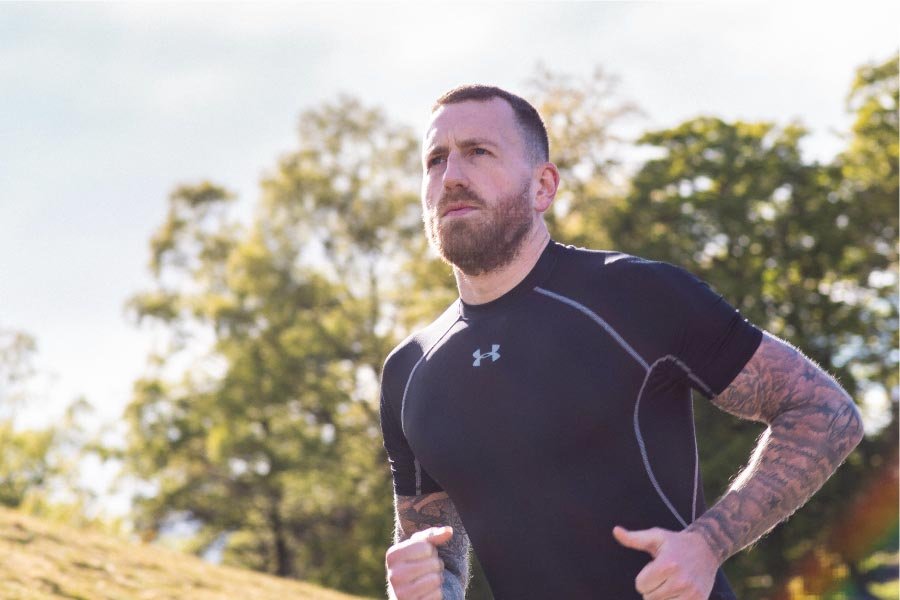3 ways to improve your running (and stay injury-free)
Long distance running is one of the best ways to improve your cardiovascular health and it can help tremendously with weight management too. However, there are some pitfalls to be aware of so I thought I’d share my top three tips on the matter.
Consider switching to barefoot shoes
Barefoot shoes have exploded in popularity over the past 5-10 years - mostly due to new scientific evidence emerging on the many potential benefits of switching to a more minimalist shoe.
So much so that, during lockdown in the UK, the barefoot shoe brand, Vivo barefoot, pretty much sold out and it became quite hard to get hold of a pair.
Part of me wonders whether this was also because people were doing more walking and the feeling of being more connected with the ground is really enjoyable - especially if you are trying to be more mindful on your walks.
Nevertheless, the increasing number of testimonials praising barefoot shoes are ever growing as people recognise the value in rebuilding the strength in their feet naturally.
Most shoes these days have very rigid ankle supports and lots of cushioning - which essentially means the muscles/tendons in your feet don’t have to work as hard when walking/running. This is fine for occasional use but over time your feet will inevitably get weaker and there are now links between plantar fasciitis and ‘comfy-shoe’ wearing. This makes sense because for thousands of years, human beings would have mostly been barefoot or at least had very minimal footwear - even whilst travelling over long distances.
The good news is that simply by switching to barefoot shoes you will start to strengthen your feet and, potentially, improve your ankles, knees and hips health too as your feet adapt to a more ‘correct’ walking/running style. The key is to build up your tolerance GRADUALLY, as too much too soon will likely cause pain or injury.
I have been wearing barefoot shoes for about 5 years now and can honestly say I love them! I love being able to feel the ground as I walk/run and my toes can nicely splay outwards when doing so. I’m currently training for a half marathon and each week I’ve been gradually increasing the distance I run with the hope of eventually being able to run the whole 21k in them. Today, I hit the 8k mark and so far so good but time will tell as the distance grows.
Nasal breathing
Ever since I started learning about the many benefits of nasal breathing, I’ve become more acutely aware of the amount of people I pass along Hove seafront who are audibly panting as they jog - often with a grimace to match. As much as I’d like to hand them James Nestor’s book, Breath, or Patrick McKeown’s book, The Oxygen Advantage as they grunt down the promenade, I don’t think anyone would appreciate that.
However, if you’re reading this and interested in improving both your aerobic capacity as well as your ability to enjoy running, then I encourage you to read on.
The benefits of nasal breathing
In a nutshell, and in a similar vein to barefoot running, nasal breathing is how we are designed to breathe at lower intensities. Not only does it strengthen and widen your nasal cavities (increasing the amount of airflow into your lungs through each breath) but it also increases the amount of nitric oxide produced which increases oxygen absorption (up to 16%!). It also reduces the amount of water you lose by up to 40%! Not to mention, the whole time your body and mind will feel less stressed as you’re able to breathe more deeply in a slower, more steady rhythm.
The key with nasal breathing is to limit yourself by your ability to breathe through your nose. That is to say, when you feel that air hunger and urge to breathe through your mouth, simply slow yourself down instead of switching to the mouth. In time, you’ll improve your ability to breathe this way and before you know it, the fatigue in your legs will become the limiting factor over your breathing.
P.s. a side benefit of breathing this way during exercise for me has been a huge reduction in how much I snore (accordingly to my girlfriend that is) - which makes perfect sense as my nasal cavities are wider, stronger and more air is flowing in and out. In fact, studies have shown that the nasal cavities of chronic mouth breathers will completely close after just 2 years of breathing this way. Another example of the ‘use it or lose it’ theory taking hold.
Slow and steady wins the race
My last piece of advice to anyone looking to improve their running ability is actually to slow down. It would appear that the best way to improve your aerobic capacity is to maintain an intensity of about 60-70% of your maximum heart rate. This is also known as Zone 2 training. This would be considered ‘light’ in effort based on an individuals rate of perceived effort (RPE). To start with it almost feels like you are going too slow but is a pace you should be able to maintain for a long time (20-40mins).
A great way for beginners to start running is using the Couch-to-5k App. This is a brilliant way to gradually increase your endurance starting with brisk walking and building towards jogging/running in short intervals - all the while you have a celeb of your choice guiding and motivating you through each part!

